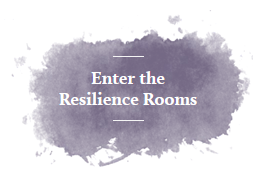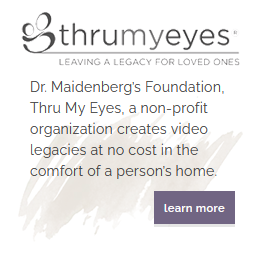Our kids are not even close to being okay. I’m astonished at how many patients I’m currently treating that have been directly or indirectly impacted by suicide or Fentanyl poisoning. Recently, a patient’s high school senior experimented with an opioid and never woke because it was laced with Fentanyl. Another patient witnessed his best friend leap from the top of a dorm building at college, and I could sadly go on and on. There’s a new crop of youth who are suffering with anxiety, depression, and Post Traumatic Stress Disorder (PTSD) because of the residual effects of these tragedies.
I often hear the reverberation of these youth; they’re left bereft with immense guilt, shame, anger, and sadness. They wonder, “What’s wrong with me, what signs did I miss?” “Why didn’t I intervene?” “What if it were me?” and “I sensed something and should have done something, it’s my fault this happened.” I have seen youth resort to socially isolating, engaging in risky behavior, and becoming profoundly anxious and depressed because of the complicated grief.
Suicide
According to The National Institute of Mental Health, suicide was the second leading cause of death among individuals between the ages of 10-14 and 25-34, and the third leading cause of death among individuals between the ages of 15-24. The National Alliance on Mental Illness reports that nearly 20% of high school students report serious thoughts of suicide and 9% have made a suicide attempt.
Teens and young adults often have a hard time reaching out and asking for help. They often feel shameful, hopeless and can’t see a way out. Developmentally, their prefrontal cortex, the brain’s executive control center isn’t fully developed until the mid-20’s. Their underdeveloped brain may lead to impulsivity and poor judgment and decision making.
There are individual, relationship, community, and societal factors that put youth at increased risk. It’s critical that all kids and adults are educated on the risk factors and warning signs. In Dana Smith’s New York Times article, she points out what to say and what to do if there’s concern about a loved one.
We’re also seeing that suicide rates are rising in communities that were hit the hardest by the pandemic. The cumulative stress over the past several years is directly and negatively impacting our youth.
Fentanyl Poisoning
Fentanyl is now the number one cause of overdose deaths in the country. It surpasses heroin by a large margin. According to the Centers for Disease Control and Prevention (CDC), drug overdose deaths in the US increased 28.5% between April 2020 and April 2021. In a 12-month period, ending in January 2022, 107,375 people in the US died of drug overdoses/poisonings. 67% of these deaths involved synthetic opioids like Fentanyl.
Fentanyl is being mixed into or sold as other drugs such as cocaine, methamphetamines, and others. Most concerning is the fact that even a small amount of Fentanyl can prove deadly. During adolescence and young adulthood, it’s typical for youth to experiment with alcohol and drug use. In current times, what might have been intended to be a fun night out socializing and experimenting, could result in lethal consequences.
What Can Be Done?
Expanding awareness and education is crucial. I’m constantly confronted with youth who are clueless about the signs and risk for suicide and Fentanyl poisoning. Most that I speak to hardly ever heard these terms discussed at school or at home. I hear gross misunderstandings, “I just have to make sure that I’m getting it from a reliable source,” “There’s nothing I can do if someone wants to do that,” and “It won’t happen to me.”
In one school, it was evident by students that a high schooler died by suicide. The parents requested from the school that the reason for his death remain confidential. The school respectfully complied with the parents’ wishes. Soon afterwards another high schooler in a neighboring community died by suicide. I suggested to the school administration that they take that opportunity to educate and talk to their students about suicide. The school administration never followed through. The underlying message to students was that it’s shameful and not important enough to talk about.
In the incident with the high school senior, a group of friends were experimenting. Two were initially sick and were hospitalized, the others went home. None of the other parents were informed by police officers, hospital staff or the other parents. My patient’s son went home, went to sleep, and never woke up. People need to be accountable and look out for one another. This is a community-based issue that we’re all encountering collectively.
Keep the lines of communication open and don’t shy away just because it’s uncomfortable to talk about or you receive a resistant response from your child or in your advocacy efforts. Seek out professional supports when needed and educate yourself so you can educate others. We all have a responsibility to do our part and protect our youth.
For suicide help: Contact the 988 Suicide and Crisis Lifeline if you are experiencing mental health-related distress or are worried about a loved one who may need crisis support. Call or text 988 or chat at 988lifeline.org.
For Fentanyl poisoning help: Contact the US Department of Justice Drug Enforcement Administration at: https://www.dea.gov/fentanylawareness. For the Department of Health and Human Services Substance Abuse and Mental Health Services Administration (SAMHSA) Opioid Overdose Prevention TOOLKIT https://store.samhsa.gov/sites/default/files/d7/priv/sma18-4742.pdf.
To learn how to live a meaningful and thriving life, see my new book ACE Your Life: Unleash Your Best Self and Live the Life You Want
Blog as published in Psychology Today.



